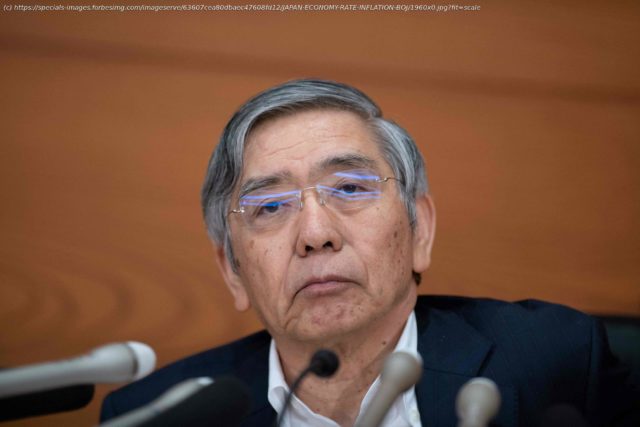The widening divergence between Japanese and U.S. yields has the yen cascading past 30-year lows and morphing into the peso right before our eyes.
The deer-in-the-headlights moment that Bank of Japan Governor Haruhiko Kuroda is suffering through isn’t just painful to watch. It’s a clear and present danger to the outlook for Asia’s No. 2 economy.
The yen’s journey toward 150 to the dollar is thought to be a threat to Japan’s 2022. The focus tends to be on how inflation is surging at a 3% rate, by some measures. That’s well above the BOJ’s 2% target and a world away from the deflation that was the zeitgeist just 12 months ago.
The U-turn has global markets wondering what, oh what, Kuroda is doing standing pat while central bankers virtually everywhere boost interest rates. The widening divergence between Japanese and U.S. yields has the yen cascading past 30-year lows. Is 160 next? Or even 170, as former Japanese Vice Minister of Finance Eisuke Sakakibara, known widely as “Mr. Yen,” warns?
To see Kuroda’s calm seems to suggest that Sakakibara and other yen bears are overthinking risks. Yet the real problem is one all too many economists ignore: how much worse off Japan might be 10 years from if now if the BOJ doesn’t stop feeding the economy unlimited steroids.
Were time travel possible, it would be fascinating to return to the 2006-2007 era of BOJ policymaking—and stay the course.
That was two BOJ governors ago, back when Toshihiko Fukui was calling the shots at central bank headquarters in Tokyo. By the time he took the reins in 2003, Tokyo was three years into the globe’s first experiment with quantitative easing.






